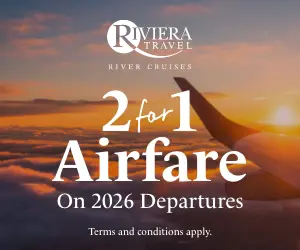Memo to TMCs: Take a Step Back From the Loyalty Game Frenzy
by Jennifer Vecchi, CRPIt’s always interesting to discover new approaches and innovative tools in the travel industry. There’s currently a big spotlight on travel management companies launching incentive programs to change traveler behavior.
You’ve undoubtedly heard of TMCs piloting shiny new toys, including gamification platforms and mobile apps, to drive travel policy compliance. I’d like to suggest we take a step back from the industry frenzy over clever new programs with clever names.
 |
It’s easy to get caught up in trendy stuff. However, it might be helpful for TMCs, travel managers and procurement executives to regroup and refocus on the company’s priorities and ultimate business goals.
The ultimate goal
When looking at travel spend and travel policy, the top priority for many companies is cost containment. However, it is rarely the only priority. For some, lower cost is followed closely by business goals such as employee recruitment and retention.
For others, it’s about driving greater customer satisfaction, which may require more face time and, hence, additional employee travel. And for others, it may have to do with corporate responsibility and security and having clear access to travel data at all times.
The goals and priorities for each company are different.
It’s here, in understanding the ultimate goal, where a loyalty program succeeds or fails.
Yes, technology has given us new ways to deliver the message about corporate travel policy and track results, but it doesn’t change the goal.
The basic concept
Experience has shown that the concept underlying programs designed to influence traveler behavior is fairly simple: What gets measured gets done. What gets rewarded gets done more.
In fact, a decade ago (long before “gamification” was named Oxford dictionary’s “word of the year”) the incentive division of Atlas Travel launched a program called Travel Policy Plus to help clients influence travel policy compliance.
There was no app, no online dashboard; just strategy driven by consultations with clients to understand their real goals and identify what would truly incentivize their employees to exact the desired behavior.
Five success factors
Here are five key factors that should form the basis of any solid travel policy incentive program.
1. The program’s strategy is aligned with the company’s business goals.
2. The reward structure is truly valued by participants.
3. Communications with participants about goals and rewards are clear and consistent.
4. Measurement of the behavior you want to impact is accurate.
5. Fulfillment of rewards is timely, which communicates appreciation for behavior modification.
With today’s technology, accurate measurement of results is much easier. The other four key factors have far less to do with technology.
Those four factors are inseparably linked to people and their perception of the program. Since perception is often reality, these concepts will drive the success or failure far more than your app’s clever name.
Strategy and the TMC
A clear strategy hinges on a dynamic partnership between the TMC and the client, so the TMC fully understands the client’s goals.
What does success look like for the client? Is it moving 20% of travelers to a preferred hotel or airline to fulfill a contract?
Is it opening a line of communication that currently doesn’t exist with young travelers to illustrate the benefits of booking through your online tool instead of going rogue and making an open booking?
We’ve seen how well-conceived and well-executed incentive programs can act as a de facto travel policy for companies that don’t have a formal policy in place.
Reward structure
Ultimately, the reward structure will drive success or failure. If you’re not offering incentives that your travelers will get jazzed about, you will not maximize ROI. If we’re talking carrot at the end of the stick, the carrot needs to be valuable in the eyes of the participant.
The job of the TMC is not to sell a company its latest carrot system. The job of the TMC is to get to know the client’s travelers and recommend a reward structure that is personal and irresistible.
Clear communications
Travelers are busy, and it’s hard to catch up with them, so you need to implement a dynamic communications plan that piques their interest.
Quick, clear communications are key, as are reminders about what’s in it for the traveler.
The bottom line
Finally, the timely fulfillment of rewards is, for the traveler, the bottom line. When the reward is delivered, does the recipient feel good about the transaction? Does he or she feel like the efforts were worthwhile? Did it make them feel special, valued and part of the team?
In the end, incentivizing travelers to change their behavior is far less about a cool app or the current gamification craze, and much more about meeting business objectives.
As the media shines the spotlight on the new industry toys, it’s important to remember these are just tools. It’s strategy and goal-setting that matter most.
Jennifer Vecchi, CRP, is director of meetings, incentives, conventions & events at Atlas Travel. An experienced event planner, Jennifer brings more than 16 years of experience to Atlas. Contact Jennifer Vecchi at: jennifer.vecchi@atlastravel.com.



















